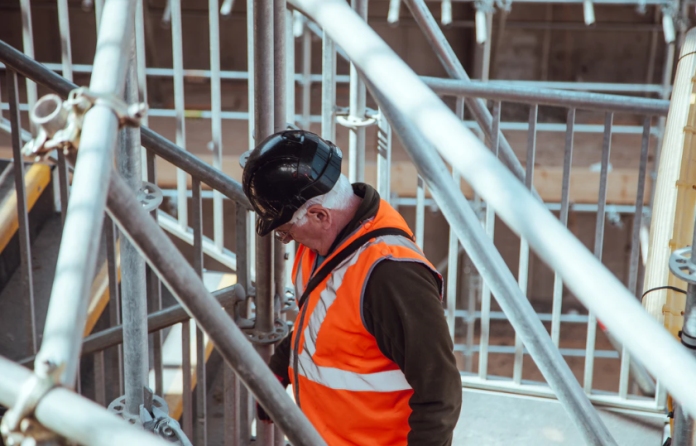
Image: Unsplash/Clem Onojeghuo
Construction firms will be expected to carry out covid-19 risk assessments as workers return to sites, and companies with more than 50 workers should publish this on their websites.
That’s one of the main points of new guidance issued by the Department for Business, Energy and Industrial Strategy (BEIS) yesterday.
The new guidance entitled ‘Working safely during coronavirus’ followed Prime Minister Boris Johnson’s address on Sunday in which he announced plans to ease lockdown measures, with employees who can’t work from home expected to return tomorrow (13 May).
To date, most contractors have been following the Construction Leadership Council’s Site Operating Procedures.
The new BEIS guidance stresses that all employers should carry out a covid-19 risk assessment. “As an employer, you also have a legal responsibility to protect workers and others from risk to their health and safety. This means you need to think about the risks they face and do everything reasonably practicable to minimise them, recognising you cannot completely eliminate the risk of covid-19,” it said.
It added that a risk assessment was “not about creating huge amounts of paperwork” but about identifying “sensible measures” to control risks in the workplace.
Firms with fewer than five workers or the self-employed don’t have to write anything down as part of their risk assessment. But larger firms are urged to share the results of the risk assessment with their workforce and those with over 50 workers are “expected” to publish the results on their website.
The government also stressed that employers have a duty to consult their people on health and safety. Contractors “must” consult with the health and safety representative selected by a trade union, or if there isn’t one, a representative chosen by the workers. The employer cannot decide who the representative will be.
Who should go to work
The BEIS guidance stressed that everyone should work from home unless they cannot do so, and that steps should be taken to consider who is needed on site. Firms should plan for the minimum number of people needed to be on site to operate safely and efficiently.
It also urged employers to monitor the wellbeing of people who are working from home and help them to stay connected to those operating in an outdoor environment. Clinically vulnerable people are being advised not to work outside the home. If they cannot do so, they should be offered the option of the safest onsite roles to let them stay 2m away from others.
And employers were reminded in the guidance not to discriminate against people because of age, sex or disability.
Social distancing
The BEIS guidance sets out an objective of maintaining 2m social distancing “wherever possible”, including arriving at and departing from work.
Where social distancing cannot be followed in full, businesses should consider whether that activity needs to continue for the business to operate.
And the guidance recommended staggering arrival and departure times at work to reduce crowding into and out of the workplace, as well as providing additional parking or facilities like bike racks to help people to walk, run or cycle to work where possible.
Break times should also be staggered, and safe outdoor areas should be considered for breaks and meetings where possible.
But in an emergency such as an accident, fire, or break-in, people do not have to stay 2m apart if it would be unsafe.
To view the full guidance, click here.










